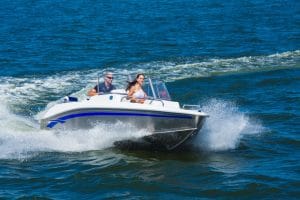A Texas Boating Safety Checklist
 With summer approaching, Texans are getting ready for boating season. Whether you own a boat, rent a Jet Ski for fun, or enjoy party boats for celebrations, water safety should always be paramount. Your day out on the water should be fun from beginning to end, without worry that anyone will suffer injury or tragedy.
With summer approaching, Texans are getting ready for boating season. Whether you own a boat, rent a Jet Ski for fun, or enjoy party boats for celebrations, water safety should always be paramount. Your day out on the water should be fun from beginning to end, without worry that anyone will suffer injury or tragedy.
Our attorneys have put together a boating safety checklist to help you stay safe, protected, and alert on the water, which can help prevent a needless and serious boating accident.
General boat safety equipment
The Coast Guard lists mandatory items for boats and vessels in the US, including registration numbers, floatation devices, distress signals, fire extinguishers, lights, and more. However, this is the bare minimum. Discover Boating also suggests the following, which can apply to nearly every type of boat:
| First aid kit
Anchor Bailing device Oars/paddles Cellphone or VHF radio to call for help |
Flashlight
Snorkel and mask Knife Diver down flag Weather radio |
They also mention bringing along a toolkit for engine repairs, checking your fuel before you leave the dock, and checking the weather beforehand. It’s also important to have a “second-in-command” who can operate the boat or vessel in the event the skipper is incapacitated or injured.
The Texas Parks & Wildlife’s Water Safety Act outlines which safety equipment is mandatory based on the type of vessel. For example, powerboats, sailboats, and most manually operated vessels are required to have personal floatation devices on board, but only powerboats must have a fire extinguisher on board, too. There are also distinctions based on the age of the traveler and the lengths of the vessels. We invite you to read the full list before you set off so you can ensure you’re protected (and following the law, too).
Staying safe on the water in Texas
One of the most important ways to stay safe on the water, whether you’re fishing, waterskiing, or sailing, is wearing a life jacket. Per the National Safety Council, “the U.S. Coast Guard reports 76% of boating deaths in 2017 were due to drowning, and 84% of the victims were not wearing a life jacket.”
There are other ways to keep yourself and your fellow passengers and boaters safe and sound while out on the water. We’ve created these checklists for your convenience.
Before embarking on your trip
Safety preparation begins before you even leave the dock:
- Check the engine, bilges, and pump to make sure everything is in working order.
- No matter how short or how long your trip, let someone know where you are going and when you expect to return.
- Ensure the weather is clear with no storms or rough waters expected.
- Identify any weak or non-swimmers in your party and ensure they are wearing life jackets.
- Ensure everyone on board knows where emergency items are located.
- Attach the kill switch.
- Set the “home” location on your boat’s GPS.
- Ensure proper ventilation around the engine’s exhaust area.
Now that you’re ready to go, it’s time to enjoy your day.
While you’re out on the water
Safety vigilance doesn’t stop once you get to your spot on the lake, river, or reservoir. Remember to:
- Always drink responsibly – whether you are the skipper or a passenger.
- Stay alert for sudden changes in weather and act accordingly.
- Monitor your fuel usage to ensure you have enough to get back to dock.
- Ensure you are familiar with the waters you’re navigating and stay within marked channels only.
- Obey all signs and regulations.
- Keep a safe distance from other vessels, personal watercraft, and swimmers.
- Cut the engine or refrain from idling in one place too long (a carbon monoxide risk).
Finally, after a long day, don’t forget to take these important measures back at the dock.
When you return from your trip
It can be even more important to take safety measures when you return from a day of boating, as you may be fatigued or distracted. However, this can be exactly when an accident can happen. Take these safety tips into consideration:
- Bring in and moor your boat correctly, at a slow speed.
- Ensure that anything you’re loading on the boat is safe and secure within the vessel, and anything you’re removing is fully out of the boat.
- Ensure the engine and power are off.
- Help your passengers safely disembark the vessel.
- Fill out, sign, and date your logbook (if you’re the boat owner).
- Prepare your boat for storage until your next adventure.
- Check in with your emergency contact to let them know you arrived safely.
Of course, these steps can vary according to what type of boat you have, whether you rented it or own it, and whether you are a skipper or a passenger.
Regardless, the boating safety attorneys at Slack Davis Sanger are here to answer all of your questions if you have been involved in a boat accident here in Texas. Our experienced legal team is here to fight on your behalf for the financial compensation you need and deserve. From our offices in Austin, Dallas, and Fort Worth, we offer strategic representation to accident victims and their loved ones throughout Texas. Call us at 800-455-8686 or complete our contact form today to schedule an appointment.
Related Articles
- The Importance of Boating Safety
- Dallas Boat Accident Lawyers
- Austin Boat Accident Lawyers
- Fort Worth Boat Accident Lawyers

The firm handles cases involving catastrophic personal injuries and deaths. Our work spans three decades of handling airplane and helicopter crashes, truck and car accidents, oilfield and construction accidents, and other devastating accidents. We try lawsuits throughout the country in both federal and state courts and have recovered hundreds of millions of dollars for our clients. To date, we have handled or tried cases in 47 states, read more about our attorneys and firm.
